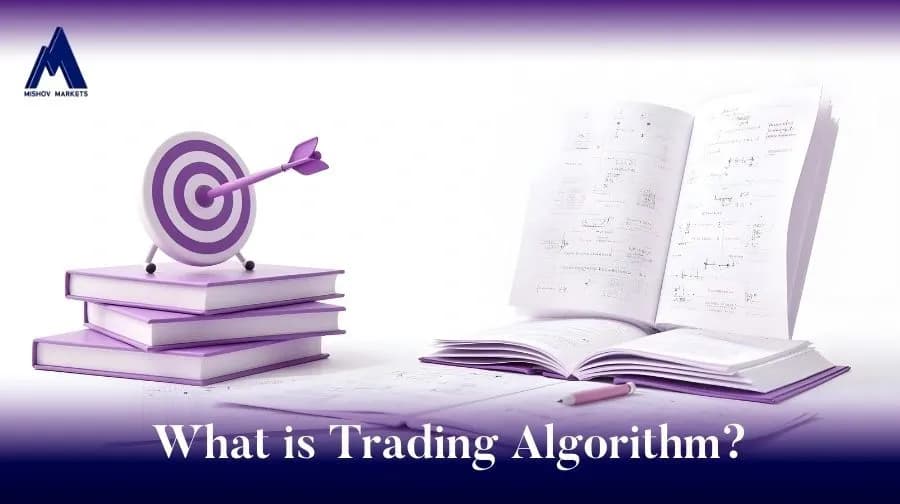What is trading algorithm

What is trading algorithm? In the fast-paced world of finance, where every millisecond can impact investment outcomes, the need for precision and efficiency has led to the emergence of algorithmic trading. This type of trading is a set of rules or instructions that a computer program follows to execute trades in financial markets. These algorithms can analyze vast amounts of market data, identify trading opportunities, and execute orders at speeds unattainable by human traders. By automating the trading process, algorithms aim to minimize human error, reduce transaction costs, and also enhance profitability.
As technology continues to advance, understanding algorithmic trading becomes essential for anyone looking to navigate the complexities of modern financial markets, whether as a professional trader, institutional investor, or retail participant. This exploration of trading will delve into its functions, practical applications, effectiveness, and the growing trend of its adoption across the trading landscape
What is Algorithmic Trading?
In the modern financial landscape, trading has evolved dramatically with the integration of technology. One of the most significant advancements is algotrading, a method that employs algorithms to automate the trading process. This essay will explore its functionalities, provide examples, assess its effectiveness, and examine the prevalence of its use among traders.
What Do Algorithms in Trading Do?
AT (algorithmic trading) refers to the use of computer algorithms to execute trades at speeds and frequencies that are impossible for human traders. These algorithms analyze market data and make trading decisions based on predefined criteria. The primary purpose of AT is to increase the efficiency of trading by minimizing human error, reducing costs, and maximizing profits.
Key Functions of AT
-
Data Analysis: Algorithms can analyze vast amounts of market data in real time. They evaluate price trends, historical data, volume, volatility, and other relevant indicators to identify potential trading opportunities.
-
Speed and Precision: One of the standout features of algorithmic trade is its speed. Algorithms can execute trades within milliseconds, capitalizing on market movements that might be missed by human traders. This precision is crucial in volatile markets where prices can change rapidly.
-
Automation: Algorithms operate autonomously based on the set parameters, allowing traders to engage in the market without constant oversight. This not only frees up time for traders but also reduces the emotional biases that can affect decision-making.
-
Risk Management: Many algorithms include risk management parameters that help traders set limits on losses or gains, ensuring a more disciplined approach to trading. For instance, an algorithm might automatically exit a position if a stock falls below a certain price.
-
Backtesting: Before deploying an algorithm, traders can backtest it against historical data to assess its effectiveness and make necessary adjustments. This process helps traders refine their strategies and build confidence in the algorithm's potential performance.
What is an Example of an Algorithm Trade?
To illustrate how algorithmic trade works, consider a simple example involving a mean-reversion strategy. This strategy is based on the premise that asset prices tend to revert to their historical average over time.
Example: Mean-Reversion Algorithm
-
Defining Parameters: The algorithm is programmed with parameters, such as the asset to trade, the time frame for analysis, and the threshold for identifying a deviation from the mean price.
-
Data Collection: The algorithm continuously monitors the price of a stock over a specified period, calculating its moving average.
-
Trade Execution: If the stock's price falls significantly below its moving average (indicating a potential undervaluation), the algorithm automatically places a buy order. Conversely, if the price rises above the moving average, it may trigger a sell order.
-
Monitoring: The algorithm continues to monitor the stock, adjusting its trades based on updated data and market conditions.
This example illustrates the efficiency and speed at which algorithmic trade operates. It can analyze data and execute trades in real time, enabling traders to capitalize on short-lived market inefficiencies.
Do Algorithmic Trade Systems Actually Work?
The effectiveness of algorithmic trade has been a subject of extensive research and debate among financial experts. Many studies indicate that AT can provide a competitive advantage, particularly in high-frequency trading environments. Although, its success is not guaranteed, and several factors influence its performance.
Advantages of Algorithmic Trade
-
Increased Efficiency: By automating the trading process, algorithms can handle multiple trades simultaneously, improving market liquidity and reducing transaction costs.
-
Consistent Performance: Algorithms follow predefined rules without being influenced by emotions or market sentiment, leading to more consistent trading performance.
-
Ability to Exploit Arbitrage Opportunities: Algorithms can quickly identify and exploit price discrepancies between different markets or assets, ensuring traders can gain from these inefficiencies.
Challenges and Limitations
-
Market Conditions: Algorithms may perform poorly in highly volatile or unpredictable market conditions. They rely on historical data to make predictions, which may not always hold true during market upheavals.
-
Overfitting: Traders can inadvertently create algorithms that are too complex or tailored to historical data, leading to poor performance in live trading situations.
-
Technological Risks: Algorithmic trade systems can be susceptible to technical glitches or malfunctions, which may result in significant financial losses. High-profile incidents, such as the "Flash Crash" of 2010, have highlighted the risks associated with algorithmic trade.
-
Regulatory Scrutiny: As algorithmic trade has grown, so has regulatory scrutiny. Regulators are increasingly focused on the impact of algorithmic trade on market stability and fairness, leading to potential restrictions or requirements for transparency.
How Many Traders Use Algorithms?
The adoption of algorithmic trade has surged in recent years, with a significant proportion of traders and investment firms utilizing these systems. According to various industry reports, algorithmic trading accounts for a substantial share of all trading volume in major financial markets.
Prevalence of Algorithmic Trade
-
Institutional Investors: Large investment firms, hedge funds, and pension funds are at the forefront of algorithmic trade. These institutions use sophisticated algorithms to manage their portfolios, execute large trades, and minimize costs.
-
Retail Traders: The rise of algorithmic trade platforms has made it accessible to retail traders as well. Many trading platforms offer tools and resources that allow individual traders to create and deploy their own algorithms without extensive programming knowledge.
-
Global Reach: Algorithmic trade also is not limited to any specific geographic location. It is widely used across global markets, including equities, forex, and commodities.
-
Future Trends: As technology continues to advance, the use of algorithmic trade is expected to grow even further. Innovations in artificial intelligence and machine learning are likely to enhance the capabilities of trading algorithms, enabling more sophisticated analysis and decision-making.








